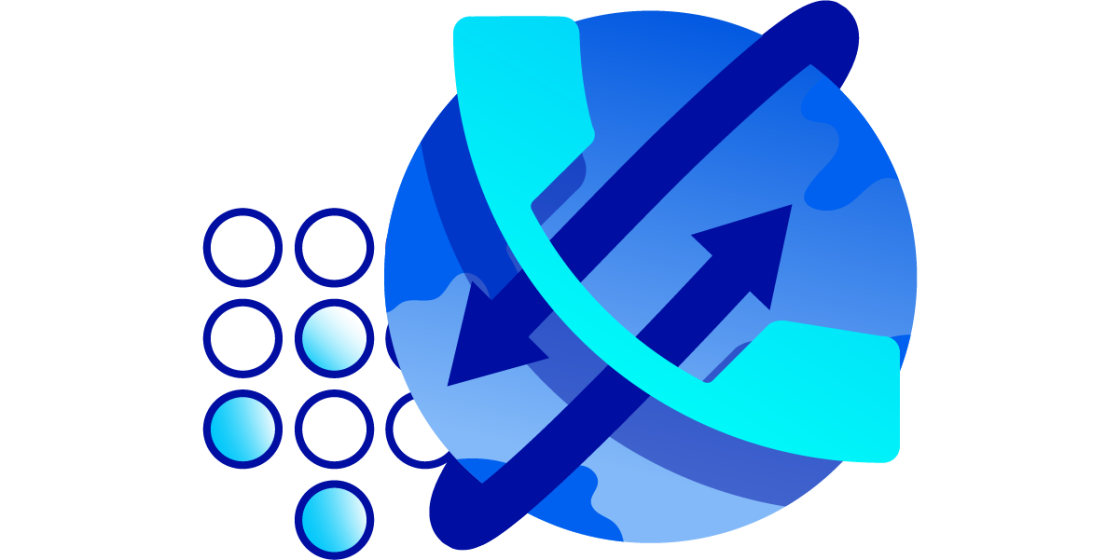Differences between edge computing and cloud computing
In computing, the term “edge” refers to a series of devices and networks physically close to the user. The cloud, on the other hand, is a vast global network of remote servers. The following article sets out the key concepts of cloud computing and edge computing. You can use it to make comparisons, identify key differences, and gain a better understanding of these technologies in general.

What is edge computing?
If we were to try to define edge computing, we could say that edge computing is about reducing the amount of resources that are needed to support the data management process by moving storage and compute resources closer to where the data is generated. Edge computing typically includes:
Edge devices:
An edge device can be any type of device that manages the boundary between two networks. They can be considered as “guardians” who control the process of data transmission between service providers and users. WiFi routers are an example of an edge device.
Edge datacentres:
Edge datacentres are smaller datacentres located at the edge of a network. They can be used to deliver cloud computing services to edge devices.
For enterprise on-premises computing, data is generated at the customer access point. An access point is a device that connects to a computer network and exchanges information with other devices, such as a laptop.
From this access point, data must be transferred over the Internet to a private datacentre. It is stored and processed there before being sent back to the client access point. This process can be time-consuming and resource-intensive.
What is cloud computing?
Cloud computing refers to the provision of computing resources, such as data storage, via the internet. Unlike edge computing and on-premises computing, cloud computing is a software infrastructure that relies on hardware that does not belong to the customer:
Cloud services:
Cloud service providers offer businesses and individuals the tools and software they need to manage a cloud-based system. Cloud services can include networks, cloud servers and cloud platforms where users can access and manage data.
IT resources:
IT resources and infrastructures are a set of devices, software, networks and processes designed to meet a company's technical needs. As an IT infrastructure, cloud computing systems allow users to access IT resources over the internet through a process known as virtualisation.
Advantages of cloud computing
Cloud computing is above all a low-cost solution. Businesses can choose from a wide range of cloud computing models, allowing them to adapt their IT infrastructure to their needs and only pay for the services they need.
Scalability is another of the more notable benefits of cloud computing, as it allows the service to be scaled to future needs. The collaborative nature of cloud technology can ultimately benefit companies whose employees need to access their company’s data.
Use cases for cloud computing
Healthcare documentation:
Cloud computing is used in the health sector to enable healthcare providers to access their patient records. This greatly reduces the time and resources required to share and manage folders.
Online education:
Many educational institutions offer online courses. These services are available in part through the use of public clouds and file-sharing solutions such as Google Cloud and Dropbox.
Software development and testing:
Cloud technology facilitates DevOps processes by increasing collaboration and visibility among team members. Cloud computing platforms enable developers to create test environments.
The advantages of edge computing
Network latency is the time it takes to access data. It makes it easier to determine performance indicators, such as how long it takes to load a website or application. The higher the latency, the longer it will take to download.
One of the advantages of edge computing is the low latency of this type of infrastructure. Edge computing is therefore the best solution in situations where real-time data processing is important.
Edge computing use cases
Self-driving cars:
Self-driving cars need to be able to collect and process data in real time, including speed, traffic analysis and location. These vehicles contain onboard sensors and cameras that can transmit data almost instantly.
Traffic management systems:
Edge computing is often used to manage car traffic. Advanced devices installed in traffic lights help to synchronise the lights and simplify the traffic process by collecting and processing traffic congestion data.
Internet of Things (IoT) devices:
IoT devices include many types of smart devices, such as thermostats or heart monitors. In many cases, they rely on edge computing because of the sensitivity and urgency of the data they monitor.
Choose according to usage
So, should you go for edge computing or cloud computing? Edge computing allows you to set up a multi-cloud or hybrid cloud device, as this type of configuration is made possible by an open architectural standard. This means that your system and the provider’s technology stack can communicate with each other.
The benefits of open standards in the cloud
Open standards enable third-party applications to connect seamlessly with customers and providers, opening up new business opportunities, ensuring resource compatibility, and minimising vendor lock-in.*
-
*Vendor lock-in refers to a situation where a customer of a product or service becomes dependent on their vendor, and cannot easily switch to another provider without incurring substantial costs or disadvantages.
Data security: vulnerabilities and protection
Data security is becoming increasingly important for businesses around the world. Large-scale data breaches, denial-of-service attacks, and malware of all kinds have put businesses at risk, disrupted operations, and damaged brands’ reputations.
Centralised cloud solutions use login details or two-step verification to ensure only that authorised users can access the platform. They also have various defensive capabilities to prevent most attacks on the system.
However, centralised systems are not completely immune to concentrated attacks and can still be hacked. A centralised datacentre remains highly vulnerable, making it easy for datacentre-focused attacks to disrupt network traffic and connectivity.
Enhanced security with edge computing
Decentralised systems such as edge computing make your data even more secure. Decentralisation eliminates many of the drawbacks associated with centralised datacentres. An edge computing provider can build a layered security strategy.
With edge computing, data can be processed from multiple data sources or even on the devices themselves, enhancing security and privacy.
Pricing models
Another difference between cloud computing and edge computing is the pricing model. When agreeing to a cloud service contract, you will need to enter into a maximum capacity agreement for a given period (monthly, bi-annually, annually), meaning that you will need to increase your subscription to get more resources.
The future of edge computing
The future of edge computing is bright. It is marked by the exponential growth of the IoT (Internet of Things) and the increasing demand for real-time data processing.
With the growing number of connected devices and the need to minimise latency, edge computing is playing an increasingly important role in processing data close to the data source. This technology enables fast data analysis and decision making.
Edge computing will play a key role in the integration of artificial intelligence and 5G technologies, facilitating faster, safer and more efficient solutions. This will be accompanied by a transformation to more decentralised IT architectures, where data collection and analysis are more distributed.
FAQs
Will edge computing replace cloud computing?
Cloud computing and edge computing are two different things, and one cannot be a substitute for the other. Edge computing is used to process temporal data, and cloud computing is used to process non-temporal data.
Is edge computing safer than cloud computing?
Edge computing is safer than cloud computing because the data is processed locally, which reduces the risk of a data breach. However, devices used for cloud computing can be more vulnerable to physical attacks, making them less secure than cloud servers.
OVHcloud solutions

The power of premium servers, the flexibility of the Public Cloud
OVHcloud works on a large scale with the best hardware to offer infrastructures with the most competitive price/performance ratio. Each resource is adapted and configured to provide maximum power to your Public Cloud instances.

Edge services with Local Zones
Think globally. Operate locally. Deploy your data where you and your customers want it, while enjoying high-performance cloud resources.